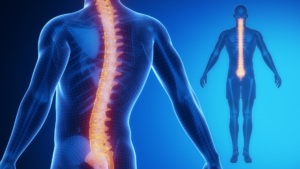Pain affects every aspect of your life, and normal daily activities are challenging when living with chronic pain. From the amount of sleep you get to the thoughts you have, pain can negatively affect your quality of life.
Your day-to-day activities are crucial in managing your pain and maintaining a healthier life. Positive changes to your routine and lifestyle are excellent ways to reduce pain and improve your mood.
Simple changes and additions to your daily life can make managing your pain easy.

Learn how to Manage Chronic Pain at Home
How to Manage Chronic Pain at Home
Deep Breathing or Meditation
Practicing relaxation skills such as breathing exercises, visual imagery, meditation, and mindfulness are some techniques that can help you center yourself and take your focus off the pain you experience.
Reducing Stress
Stress and Pain go hand-in-hand. When you are stressed, your body may react in different ways – such as tensing muscles – which can increase your pain. This can be prevented by reducing and managing your stress.
Stress can have a negative impact on your relationships, work ethic, eating habits, and mood. Keep a list of what stresses you out and consider how it affects your life. Once you have a list of stressors, think of ways you can minimize them or eliminate the triggers. For example, if you get stressed and feel rushed during the work week, brainstorm ways you can make the week easier by incorporating things like meal prep, picking out your outfit the night before, or other ways to make the week go more smoothly.
Stay Active
If you struggle from pain, exercise may provide the relief you are looking for. Cardio exercises use large muscle groups and raise your heartrate, which releases endorphins – you body’s natural painkillers. Exercising for 30-45 minutes of low-intensity aerobic exercise is recommended and can help relieve pain.
Talking with your doctor before starting any new exercise program is important.
Get More Sleep
It is no secret that pain can interfere with a good night’s sleep. You may have issues falling asleep or staying asleep throughout the night. Medications can cause sleep issues, too. If your pain medication causes drowsiness and fatigue, you may be more inclined to sleep during the day instead of at night. Getting a proper amount of sleep at night is important to how your body copes with pain and how your body boosts your energy levels.
Here are some ways to sleep better:
- Practice Relaxation: Write in a journal, listen to soothing music, or practice deep breathing techniques to help prepare your body for restful sleep.
- Set a Schedule: Routine sleeping can help you get better sleep. Go to bed at the same time and set an alarm for the same time each day.
- Be Mindful of What You Eat and Drink: Caffeine and alcohol can affect sleep patterns, as well as heavy meals. If you need a snack before bed, try almond butter on toast, crackers and cheese, or nuts and fruit.
Managing your pain at home is achievable when you have the support of a comprehensive care physician. Get the help you need from the team at Progressive Pain Management by filling out the form below.
Spinal cord stimulation (SCS) has emerged as a transformative approach to managing chronic pain conditions that have proved resistant to traditional therapies. This article delves into the groundbreaking field of SCS, shedding light on its mechanisms, applications, and potential to revolutionize pain management.
Chronic pain conditions represent a significant healthcare challenge, affecting millions of individuals worldwide. When conventional treatments fail, spinal cord stimulation (SCS) offers a promising alternative. This innovative approach has shown considerable efficacy in managing refractory chronic pain conditions, providing relief and improving the quality of life for many patients.

Spinal cord stimulation as a revolutionary approach to pain management
Understanding Spinal Cord Stimulation
SCS involves the delivery of low-level electrical pulses to the spinal cord, interfering with the transmission of pain signals to the brain. This process effectively ‘masks’ pain signals, replacing them with a tingling sensation known as paresthesia.
The Evolution of Spinal Cord Stimulation
The concept of SCS can be traced back to the 1960s, with the introduction of the Gate Control Theory of pain by Melzack and Wall. This theory proposed that non-painful input closes the ‘gates’ to painful input, preventing pain sensation from traveling to the central nervous system. This theory laid the foundation for the development of SCS.
Mechanism of Action
SCS works by modulating the pain signals at the spinal level, before they reach the brain. The electrical pulses delivered by the stimulator compete with the pain signals, effectively ‘drowning them out’ and preventing them from reaching the brain.
Applications of SCS
SCS has been successfully employed in managing various chronic pain conditions, such as:
- Failed Back Surgery Syndrome (FBSS)
- Complex Regional Pain Syndrome (CRPS)
- Ischemic and coronary artery disease
Benefits of SCS
SCS offers numerous advantages over traditional pain management therapies. These include:
- Effectiveness: SCS has shown considerable efficacy in reducing pain intensity and improving the quality of life for patients with refractory chronic pain conditions.
- Customizability: The stimulation parameters can be adjusted to meet the individual needs of each patient, ensuring optimal pain relief.
- Cost-effectiveness: Despite the high initial cost, SCS can be a cost-effective solution in the long run, especially when compared with other long-term therapies.
Challenges and Limitations
While SCS offers numerous benefits, it is not without its limitations. These include the invasive nature of the procedure, potential for complications, and the requirement for ongoing management and adjustment of the stimulator settings.
Advancements in Spinal Cord Stimulation Technology
Over the years, significant advancements have been made in SCS technology. Modern devices are more sophisticated and reliable, offering improved pain relief and fewer complications.
The Future of Spinal Cord Stimulation
The field of SCS is evolving rapidly, with ongoing research and development paving the way for more effective and safer solutions for chronic pain management.
Conclusion
In conclusion, SCS represents a revolutionary approach to chronic pain management. By modulating pain signals at the spinal level, SCS offers a promising alternative for patients who have not found relief through conventional therapies. As research and technology continue to advance, the future of SCS looks promising, offering hope for millions of individuals living with chronic pain. Talk to the professionals at Progressive Pain Management to learn more about spinal cord stimulation therapy and if this treatment is effective for your chronic pain. Fill out the form below to get started.
Migraines aren’t just a typical headache. Chronic migraines can wreak havoc on a person’s life. If you’ve experienced these extreme episodes, you know they are very painful and can have someone disabled for very long periods of time. Chronic migraines are a very real challenge, but thankfully, some things can be done to treat them.

Chronic Migraine Causes and Treatments
What is a migraine, and what causes it?
A migraine is a type of headache characterized by recurrent attacks of moderate to severe head pain that is often accompanied by nausea, vomiting, and sensitivity to light or sound.
Migraine headaches are believed to be caused by the dilation and contraction of blood vessels around the brain.
Migraines can be caused by factors such as dehydration, stress, or withdrawal from caffeine.
Medical experts are still unsure of the exact causes, but the consensus is a temporary abnormal brain function and misfiring of nerves.
Medical Treatment Options for Severe and Chronic Migraines
The two most common treatments for severe and chronic migraine are Botox and nerve blocks.
Botox is a procedure where injections of purified botulinum toxin are made into the muscle tissue of the forehead to reduce the muscle contractions in this region, which can lead to headaches.
Nerve blocks work by injecting pain medication (such as anesthetic or cortisone) around certain nerves in the neck, head, or face.
Holistic remedies include treatments such as acupuncture and biofeedback.
For more information on medications, remedies, and medical treatments, click here.
What Medicines are Available for treatment?
Anti-seizure medicines, along with beta-blockers and anti-depressants, are all within the realm of choices doctors go to to find treatments for their patient’s pain. Some aren’t advisable for pregnant women, or women who are attempting pregnancy, so keep that in mind!
How can Chronic Migraines be Prevented?
Depending on why they occur, chronic migraines can sometimes be prevented by certain lifestyle changes, such as drinking more water, working out, and eating better. But, sometimes, the causes are more complex than that, and prevention requires medical intervention. Those preventative measures can come in many forms, such as Botox, Calcium blockers, and certain supplements.
One typical supplement used to prevent migraines is magnesium. Magnesium interacts with the chemicals in the brain and can stop a migraine before it happens. For more information on using magnesium to treat chronic migraines, click here.
What will Happen During an Appointment to Find Treatment?
A specialist will sit with you and ask a range of questions surrounding your family history, genetics, and lifestyle. If further testing is needed, an MRI or CT scan may be needed, and then from there, treatment will be decided based on input from yourself and your doctor.
Migraines don’t have to take over your life; you don’t have to wait out the pain. Take control of your pain management and contact Progressive Pain Management to gather more information on how we can help you on your journey to a pain-free life!
Nerve blocks are a common form of therapy used to treat and manage chronic pain. Groups of nerves that cause pain to a particular region or area of the body can typically be blocked via injections of medication also known as nerve blocks. These nerve blocks are numbing substances that numb the nerves signaling a patient’s pain.

Nerve Block Injections for Chronic Pain Management
Four Categories Of Nerve Blocks for Chronic Pain
Nerve blocks are typically categorized into four main categories. These four nerve block categories include: therapeutic, diagnostic, prognostic, and pre-emptive.
- Therapeutic nerve blocks are used to treat chronic pain and various pain conditions. These nerve blocks typically contain local anesthetic which can be used to treat acute pain. Studies have shown these nerve blocks effectively improve the quality of life for patients with chronic pain.
- Diagnostic nerve blocks are issued to identify the source of a patient’s pain. These blocks contain a lower level anesthetic that provides a duration of pain relief.
- Prognostic nerve blocks identify the prognosis of certain treatments. For example, a prognostic nerve block may be issued to determine if a permanent solution, such as surgery, would be a more successful route to alleviate the patient’s pain.
- Preemptive nerve blocks are unique in that they are used to prevent subsequent pain often seen as the results of a procedure. This includes symptoms such as phantom limb pain.
Nerve blocks are also broken down into more specific categories based on the type of pain or location of pain that the patient is experiencing. These specific nerve blocks are sympathetic, stellate ganglion, and facet joint blocks.
- Sympathetic nerve blocks are performed to determine if there is existing damage to the sympathetic nerve chain. This includes a network of nerves that run the entire length of the spine and are responsible for controlling the body’s involuntary functions.
- Stellate ganglion blocks are a type of sympathetic block that are also used to identify damage to the sympathetic nerves. However, stellate ganglion blocks are used more specifically to identify nerve damage to the head, neck, chest, and arms.
- Facet joint blocks are conducted in the facet joints of the spine and are also known as zygapophysial blocks. These are used to determine whether a facet joint is the cause of pain.
Nerve Blocks by Location
Nerve blocks can be injected in various areas depending on the cause and location of a patient’s pain. Some of the most common nerve blocks by anatomical location include…
- Trigeminal nerve blocks for Trigeminal Neuralgia (face)
- Subarachnoid and Celiac nerve blocks (abdomen and pelvis)
- Supraorbital nerve blocks (forehead)
- Cervical, Thoracic, and Lumbar epidurals (neck and back)
- Maxillary nerve block (jaw)
Side Effects of Nerve Blocks
While studies have shown that nerve blocks can be highly effective in treating chronic pain, side effects are always possible. Everyone’s body reacts differently to medical treatments, but common side effects may include soreness at the injection site, rash, itching, bleeding, elevated blood sugars, and extra energy. While this may not happen to everyone, it is important to contact your doctor if you begin experiencing side effects outside of what is considered normal or if you’re experiencing anything causing concern.
Nerve blocks are specifically for patients with nerve damage or neurological conditions such as Trigeminal Neuralgia or chronic back pain. Patients who do not have nerve damage may not see the results from nerve blocks. However, patients experiencing chronic pain from nerve damage can benefit greatly from nerve blocks. Be sure to talk with your doctor if you think that nerve blocks may be the best option to treat your chronic pain.
The team of Progressive Pain Management specialists help treat various conditions that can benefit from these types of nerve blocks. Fill out the form below to get started.
Chronic pain is primarily one of the prevalent conditions affecting approximately 1 in 5 adults in the U.S. A substantial number of these patients experience chronic neuropathic pain. Also, another research shows that neuropathic pain affects more women than men, with a pain frequency rate of 8% and 5.7%, respectively, in persons above 50 years. Even with this high rate of occurrence, many do not understand what it is and the treatment procedures. It has been referred to as a “hidden epidemic” due to its unpredictable nature.
Fortunately, intense neuropathic pain does not always indicate a life-threatening condition. Some people with neuropathy might have relatively minor and manageable symptoms with conservative treatment like medication or physical therapy. Here is all you need to know about different types of neuropathic pain and their treatment.

Neuropathic Pain and Treatment Options
What is Neuropathic Pain?
Neuropathic pain is caused by peripheral or spinal nerve damage that transfers information between the brain and spinal cord from the skin, muscles, and other body parts. The pain is usually described as shooting, burning, tingling, numbness, and pins and needles.
Despite having complex symptoms, lesions or diseases of the somatosensory system are major causes of neuropathic pain. It is often resistant and can be very intense. Other causes include:
- Alcoholism
- Cancer and cancer treatments
- Viral infections
- Diabetes
- Trauma or surgeries which damage the nerves
- Vascular malformations
- Shingles
Types of Neuropathic Pain
The different types of neuropathic pain vary with body parts and nerves affected. When one nerve is affected, it is called mononeuropathy, while damage on more than one nerve is called polyneuropathy. The different types of neuropathic pain and the body parts they affect include;
Peripheral Neuropathy
Peripheral neuropathy is a nervous disorder affecting your hands, feet, toes, arms, and legs. Often, people with peripheral neuropathy experience weakness in their muscles and reduced sensitivity in their skin.
PN differs from other nerve damage forms because it simultaneously affects multiple peripheral nerves. Even if one body part can send signals to the brain, another factor may be unfunctional.
Autonomic Neuropathy
Autonomic neuropathy is a condition that damages the autonomic nervous system. Often the damage is episodic and intermittent. This causes an inconsistent negative effect on the spinal cord signals. Problems with this system will lead to dry eyes, uncontrolled reflexes, and bladder function difficulty.
Focal Neuropathy
Focal neuropathy is a neurological disorder affecting one or more body parts. It is mainly caused by trauma or infection and affects muscles in an area close to the damaged nerve.
When you suffer from focal neuropathy, it is common for you to experience numbness, tingling, burning sensations, and even pain near the affected site. If you experience these symptoms and are unsure what they mean, visit an ophthalmologist or neurologist to find out more.
Proximal Neuropathy
Proximal neuropathy is a condition in which people cannot feel their extremities. This nerve damage causes people to experience numbness, tingling, or feelings of pins and needles beginning in the fingers or hand. In addition to difficulties with walking, performing daily living and self-care activities may be hindered by this disorder.
Diabetic Neuropathy
Diabetic neuropathy is a diabetic condition resulting in nerve damage. This nerve damage can happen in any part of your body, but the most affected parts are the feet. The symptoms can start as mild and unnoticed but will progress in severity over time. People with DN usually have issues with mobility.
How is Neuropathic Pain Treated?
Most types of neuropathic pain will ease with time. However, physicians can suggest transcutaneous electrical nerve stimulation (TENS) therapy for chronic neuropathic conditions.
Other treatment options include pain relief medication, and, in some cases, surgery is necessary. Additionally, here is an outline of the most common treatments;
- Anti-epileptics
- Anti-depressants
- Acupuncture
Working with a neuropathic pain specialist offers a permanent treatment plan that does not involve surgery or medication.
Take Action Now and Start Living Again
Don’t let chronic neuropathic pain define or affect your quality of life. Maybe until now, your options have been surgery or the use of medications. Luckily, Progressive Pain Management offers treatments for neurological and chronic pain conditions. A physician evaluates your condition, conducts lab tests, and creates a treatment plan per your unique condition. Contact us to learn more about neuropathic pain and treatment offerings. We will help provide an effective treatment option for you. Fill out the form below to get started.
Muscle pain affects anyone, including powerlifters, construction workers, and pregnant women. Failure to address the issue leads to chronic pain, affecting how one moves. This condition occurs when muscle fibers get stuck in contraction, forming bumps known as trigger points.
Massages and chiropractic adjustments can help relieve the pain. However, trigger point injections may be necessary to eliminate chronic muscle pain.

Trigger Point Injections for Treating Chronic pain
What Are Trigger Point Injections?
Trigger point injections involve injecting a local anesthetic into contracted muscles to relax them and relieve pain. The affected muscles often form bumps under the skin that cause tenderness due to restricted blood flow.
Trigger point injections effectively relieve the symptoms of myofascial pain syndrome, a condition that affects the muscles and the tissue surrounding them. Trigger points can form due to the following reasons:
- Musculoskeletal disorders
- Lack of regular exercise
- Vitamin deficiency
- Prolonged poor posture
Trigger point injections can include a combination of local anesthetic and steroids that block pain receptors and reduce muscle inflammation and knotting.
The Benefits & Conditions They Treat
Trigger point injections can help relieve chronic pain affecting the muscle and nervous system. Some of the conditions treatable with the injections include:
Migraines
Trigger points in the neck and shoulder muscles may cause tension headaches which can be mild or severe and throbbing. Trigger point injections can help deliver immediate relief to patients suffering from severe headaches or frequent migraine attacks.
Myofascial Pain Syndrome
Myofascial pain syndrome is a chronic condition that affects muscles, causing them to knot and send painful sensations to unrelated regions. Several causes, such as injury, poor posture, and psychological stress, cause muscle stiffness and limit motion.
Trigger point injections can help block neural pathways and relieve pressure from the contracted muscles. The injections can also help torn muscles heal.
Fibromyalgia
Fibromyalgia is a chronic pain condition whose symptoms include widespread body pain and fatigue. Patients also experience mental distress and trouble sleeping.
Injecting an anesthetic into a trigger point can help deliver relief from the pain and relax any knotted muscles.
What Happens During The Procedure?
Trigger point injections typically take minutes and require a brief in-office appointment. Injecting trigger points may be painful, but this is a great sign your doctor is treating the correct spot.
During the procedure, your doctors will first identify your trigger point. After sterilizing the area of concern, they will inject the trigger point with local anesthesia to relax the muscle and bring relief. The dry-needle technique is used for patients allergic to anesthesia.
Trigger Point Injections with Our Team of Experts
Trigger Point Injection is effective in providing relief to patients experiencing chronic pain. The injections help the inflamed muscles relax, allowing the blood vessels to function freely.
Our team of experts at Progressive Pain Management focuses on interventional pain procedures that bring relief to patients with chronic pain. Our physicians have the expertise to administer some of the most advanced pain management techniques. Please fill out our form and let us help you manage your chronic pain.
Individuals would be shocked at the number of unnecessary surgeries annually performed in the United States. Unnecessary surgery, by definition, is exactly what it sounds like; “Any surgical intervention that is either not needed, not indicated, or not in the patient’s best interest when weighed against other available options, including conservative measures.” Fortunately, there are easy, effective actions that you can take to avoid going under the knife.

Working with Doctors to Avoid Unnecessary Surgery
Four Ways to Avoid Undergoing Unnecessary Surgery
1. Be educated.
Don’t be afraid to ask your doctor questions to better understand how the recommended procedure will help you in the long run. Will this surgery get rid of your pain? Will this surgery help improve the way your body operates? If the answer to either of these questions is yes, ask them to explain exactly how it will help. The same thing goes for understanding the risks. Be aware of common complications as well as worst-case-scenario situations. Being fully informed will allow you to make the best decision for you. You are your biggest advocate.
2. Know your doctor.
Research your physician and/or surgeon to be sure you are comfortable with the person who is taking care of you. Look into their board certifications, their success rate for the surgery they are presenting to you, and the number of times they have performed the procedure. There is nothing wrong with being certain you are in the best hands and receiving the best care.
3. Consider any alternative treatments.
Not all cases of illness or chronic pain require surgery. Be sure to discuss any and all alternative courses of treatment with your physician. Symptom management or watchful waiting may be the route to go; monitoring your symptoms while holding off on surgery to see if your condition improves, worsens, or remains the same.
4. Prioritize a healthy lifestyle.
You’ve heard this one time and time again and it still rings true. Get moving, even if you’re just taking a daily ten-minute walk. Drink plenty of water. Focus on eating a whole-foods or low-fat diet. Be sure you are getting adequate sleep every night. Modifying your lifestyle to incorporate healthier behaviors ultimately leads to a healthier you.
Understandably, sometimes surgery is the best course of action for patients. However, you should never feel pressured to move forward with any medical treatment you are uncomfortable with. Be educated, know your doctor, consider alternative therapies, and prioritize a healthy lifestyle. These four steps alone may help you, or a loved one, avoid an unnecessary surgery.
The experts at Progressive Pain Management can help manage pain conditions using minimally-invasive techniques and state-of-the-art therapies to help you avoid surgery. Fill out the form below to get started.
There is an ever-growing variety of treatments for those suffering from chronic pain. There is the option of general medicine – oral and topical therapies – that can be used to reduce pain and inflammation. Your doctor may suggest non-medication pain relievers or even use alternative methods like acupuncture.
Physicians will occasionally use interventional techniques involving outpatient procedures or injections of various levels to treat pain. With the recent growth of research, knowledge, and game-changing technology, the amount of treatment options keeps increasing. But not only that, reliable, effective, and safe techniques can be used to manage pain.

Common Treatment Options for Pain
Common Treatment Options to Relieve Chronic Pain
- Exercise
Although rest alleviates pain, too much rest can actually increase pain and increase your risk of further injury. Stay active to help relieve pain from common conditions such as lower back pain, arthritis, and fibromyalgia. Exercise releases endorphins – the body’s natural painkiller – so as you exercise, you are helping your body diminish pain and build strength.
2. TENS
TENS (transcutaneous electrical nerve stimulation) therapy uses a low-voltage electrical current to block pain signals from going to the brain. Electrodes are placed on the skin near the affected area and the electrical stimulation is transmitted into the nerves, blocking “normal” pain signals.
3. Biofeedback
Biofeedback is a machine-assisted technique that measures information about physical characteristics from a patient. It can capture data such as heart rate, brain activity, and body temperature to help enhance the patient’s awareness of how their body reacts to stress and pain. This helps patients learn how to manage physical and emotional pain due to chronic conditions.
4. Yoga
Yoga incorporates a number of relaxation techniques such as breath control, meditation, and strength-training exercises. The combination of these techniques help with chronic pain conditions like arthritis, headaches, back pain, and fibromyalgia. Yoga helps reduce pain that is specific to stress-related conditions. The gentle movements of yoga helps strengthen muscles without putting strain on other parts of the body.
5. OTC Pain Relievers
Over-the-counter pain relievers such as NSAIDs and acetaminophen help relieve mild to moderate pain. The most common medications are Tylenol, Advil, Motrin, and Aleve. NSAIDs reduce inflammation and swelling. Your doctor will be able to suggest which type of OTC medication is best for your chronic pain. Taking pain relievers for long-term relief can cause negative side effects, so be sure to consult with a physician before taking anything.
6. Nerve Block Injections
Nerve block injections are primarily performed as outpatient procedures, but may be used on patients who are already hospitalized for other reasons. Often times, doctors will use contrast dye to determine the most accurate placement of the injection needle. There are a number of different types of injections: epidural steroid injections, facet joint injections, lumbar sympathetic block, celiac plexus block, as well as others.
7. Physical Therapy
Physical therapy helps relieve pain by using specialized movements and techniques. PT helps restore range of motion, improve movement, and normal functions that have been impaired by injury, chronic pain, or a disability. Physical therapists utilize a variety of techniques to provide well-rounded care for their patients including stretching, strength-training, pain-relieving techniques, and sometimes TENS therapy. The goal is to help restore your quality of life and help patients get back to doing what they love.
8. Mind-Body Relaxation Techniques
Mind-body therapies are techniques that are used to train the mind’s ability to positively affect pain and symptoms of the body. Many techniques include relaxation therapies such as meditation, progressive muscle relaxation, breathing exercises, and mindfulness. Training the body to relax and release stress can reduce pain and discomfort from chronic conditions.
9. Therapeutic Massage
Therapeutic massages help manage pain by reducing stress and relieving tension by increasing blood flow. Massages reduce the chemicals in your body that stimulate and sustain pain. Those who suffer from painful muscles, tendons, joints, and chronic back and neck pain can benefit from therapeutic massages. By applying pressure to certain areas on the body, it is possible to impede pain signals to and from the brain, although the effectiveness is still being researched.
Finding treatments that help reduce inflammation and discomfort is important when you live with chronic pain. Regain your quality of life and get back to doing what you love with the help of the experts at Progressive Pain Management. Fill out the form below to start.
There are a lot of options for treating pain without the use of narcotics. The opioid epidemic is spreading across the nation at frightening rates. Many state laws are cracking down on opioid prescriptions to prevent excessive prescribing.
However, many chronic pain patients feel lost and confused about available options. The state of New Jersey passed a law limiting initial opioid prescriptions to 5 days to reduce opioid misuse and addiction. Other states are following suit. Chronic pain is a legitimate medical concern.

Treating Pain Without Opioids
Non-Opioid Treatments for Chronic Pain
Over-The-Counter Pain Relievers
Taking OTC pain relievers may not be the best way to manage your chronic pain, but will help reduce symptoms on a daily basis. Many doctors prescribe Non-Steroidal Anti-Inflammatory Drugs (NSAIDs) for those suffering from chronic headaches, osteoarthritis, or rheumatoid arthritis because these medications help fight pain and inflammation.
Physical Therapy
Patients who suffer from chronic pain are typically unable to maintain a healthy, active lifestyle. This leads to weakened joints and muscles. Physical therapy helps patients reach their full potential using low-intensity therapies like hydrotherapy and ultrasound. Once they get used to that routine and intensity, the focus can shift to more targeted exercises for their specific pain. Physical therapy encourages a higher quality of life and helps patients regain mobility.
Acupuncture
This ancient Chinese form of pain management is most often used to help treat back and neck pain, osteoarthritis, and chronic headaches. The needles stimulate a nerve, signaling the brain to release endorphins that act as a natural opioid. By stimulating the nerve that runs from your brain to your colon, inflammation will lower and often reduce the cause of pain.
High-Tech Methods for Treating Chronic Pain
With technology, new methods for treating pain are becoming increasingly popular with both doctors and patients.
Radiofrequency Ablations
This process uses heat to reduce pain by eliminating communication to the brain. It’s common in patients who suffer from chronic pain in the lower back, neck, and joints. It provides immediate relief and gets the patient back to a restored quality of life in a shorter amount of time.
Spinal Cord Stimulation
Spinal cord stimulation hides the pain signal before it can reach the brain. A small device is surgically implanted under the skin and sends mild electrical currents to the spinal cord. Pain is reduced due to the stimulation modifying the pain signals and redirecting them away from your brain. Patients may sense a tingling sensation instead of pain.
Nerve Block Injections
With the help of an X-Ray, these injections can dampen or block the pain. Nerve blocks help the pain from spreading to other parts of the body, by minimizing the signals sent to the brain. Different types of nerve blocks depend on a patient’s pain. Injections can be used to treat painful conditions, determine the source of pain, or to predict the result of a treatment.
Physicians are using these non-opioid treatments instead of writing prescriptions. Other therapies that don’t include medication like exercise therapy and cognitive-behavioral therapies (CBT) are gaining popularity. They focus on changing the patient’s attitude and awareness of their pain and teaching coping mechanisms to better manage their pain.
Talk to your doctor about alternative treatment options if you suffer from chronic pain. Progressive Pain Management provides a variety of pain management options to help you find relief from your chronic conditions. Fill out the form below to get started.
Fibromyalgia is a common chronic pain syndrome that affects 4% of people in the United States. This pain is typically characterized by widespread chronic pain, fatigue, and tenderness to the touch.
This syndrome affects ligaments and muscles and is usually present for many years by the time a medical professional diagnoses it. Fibromyalgia has been proven to be genetic, although symptoms appear most frequently after a stressful event – whether emotional, physical, or medical. Chronic pain due to health conditions like systemic lupus or rheumatoid arthritis can trigger fibromyalgia syndrome.
Even a gentle massage can be extremely painful for patients who suffer from fibromyalgia. This is because their muscles are tender to the touch. This often disrupts daily life and prevents people from retaining a high quality of life.

How to Treat Fibromyalgia
Symptoms often include
- Stress – mental and psychological
- Illness
- Depression
- Lack of concentration
- Headaches
- Fatigue
Ways to Treat Fibromyalgia Pain
Over-the-Counter Medications
Your doctor may recommend over-the-counter medications to relieve pain from fibromyalgia. Pain relievers such as aspirin, ibuprofen, and naproxen may be used to help minimize muscle aches, reduce inflammation, and improve sleep.
Always check with your doctors before taking NSAIDs. If taken over a long period of time, they increase the risk of strokes, heart disease, and stomach ulcers.
Antidepressants
Antidepressants help with pain and fatigue. They also help raise the levels of naturally produced chemicals such as serotonin and noreinephrine. The side effects of can include nausea and weight gain.
Yoga
Taking yoga classes promotes muscle strength, incorporates meditation, and teaches different ways to relax. Individuals with fibromyalgia who take yoga classes experience a boost in their mood and less pain and fatigue.
Be sure to let your instructor know about your condition so they can adjust poses for you, if necessary.
Acupuncture
Acupuncture for pain relief is proven to help patients who have fibromyalgia. It involved pricking the skin with tiny needles, which is used to promote natural self-healing, encourages blood flow, and a change in the level of neurotransmitters in your brain.
It can be used to treat a variety of chronic pain conditions. Always be sure your acupuncturist is licensed to decrease any risks or side effects.
Physical Therapy
Physical therapy is used to improve your range of motion and strengthen muscles. Therapists design a specific program to help manage specific pain conditions in order to reduce pain. Along with self-care techniques, physical therapy helps manage fatigue and pain on your own.
Exercise
Exercise is a proven way to battle tiredness and increase energy levels. Exercise increases the brain’s production of endorphins, improving sleep and reducing depression. For people with fibromyalgia, activities like walking, biking, and swimming continue to show benefits in improving health.
When fibromyalgia affects your daily life and keeps you from doing waht you love, visit Progressive Pain Management. Their comprehensive and holistic approach to treating pain will help reduce your symptoms while caring for the root cause of pain. Fill out the form below to learn more.

